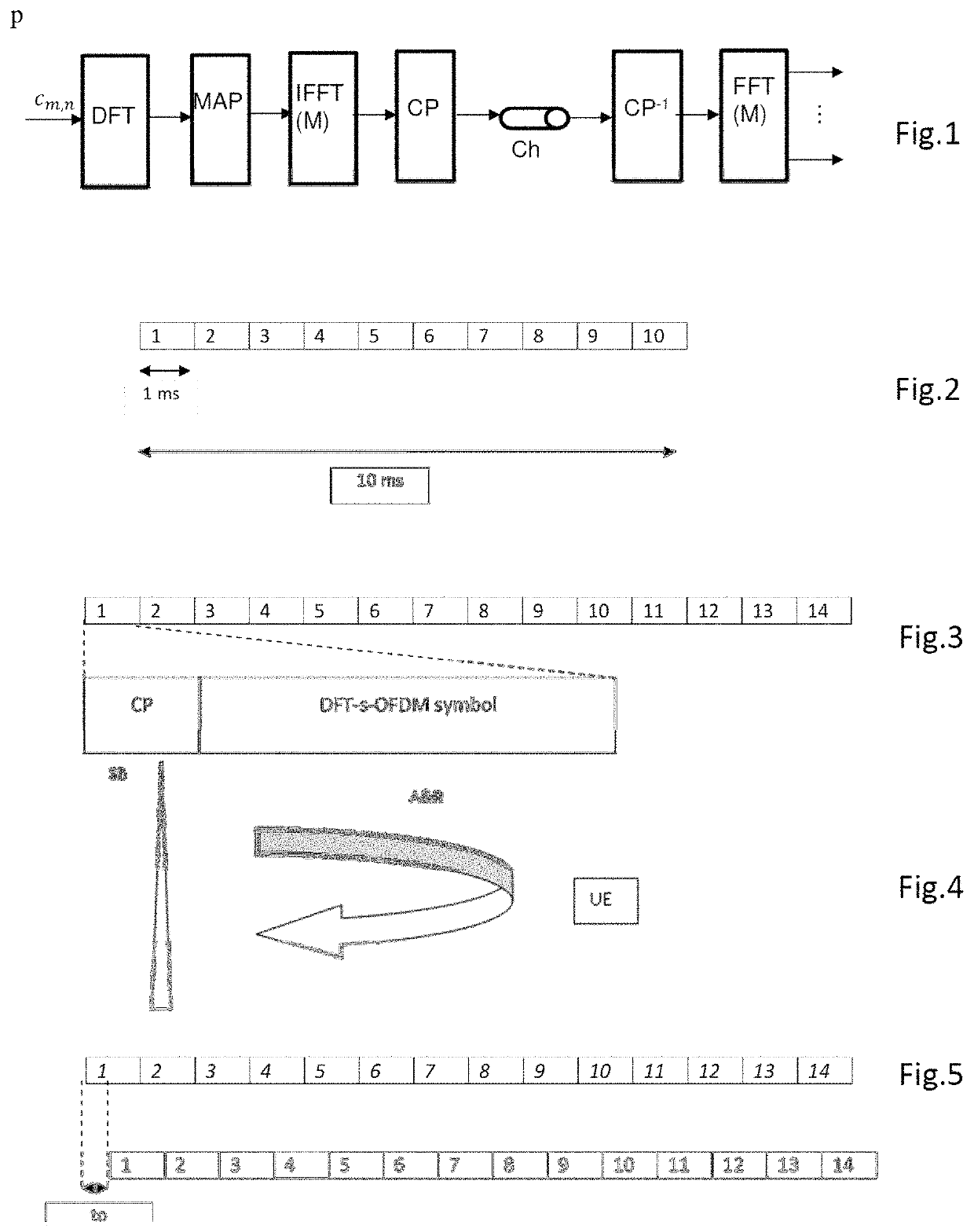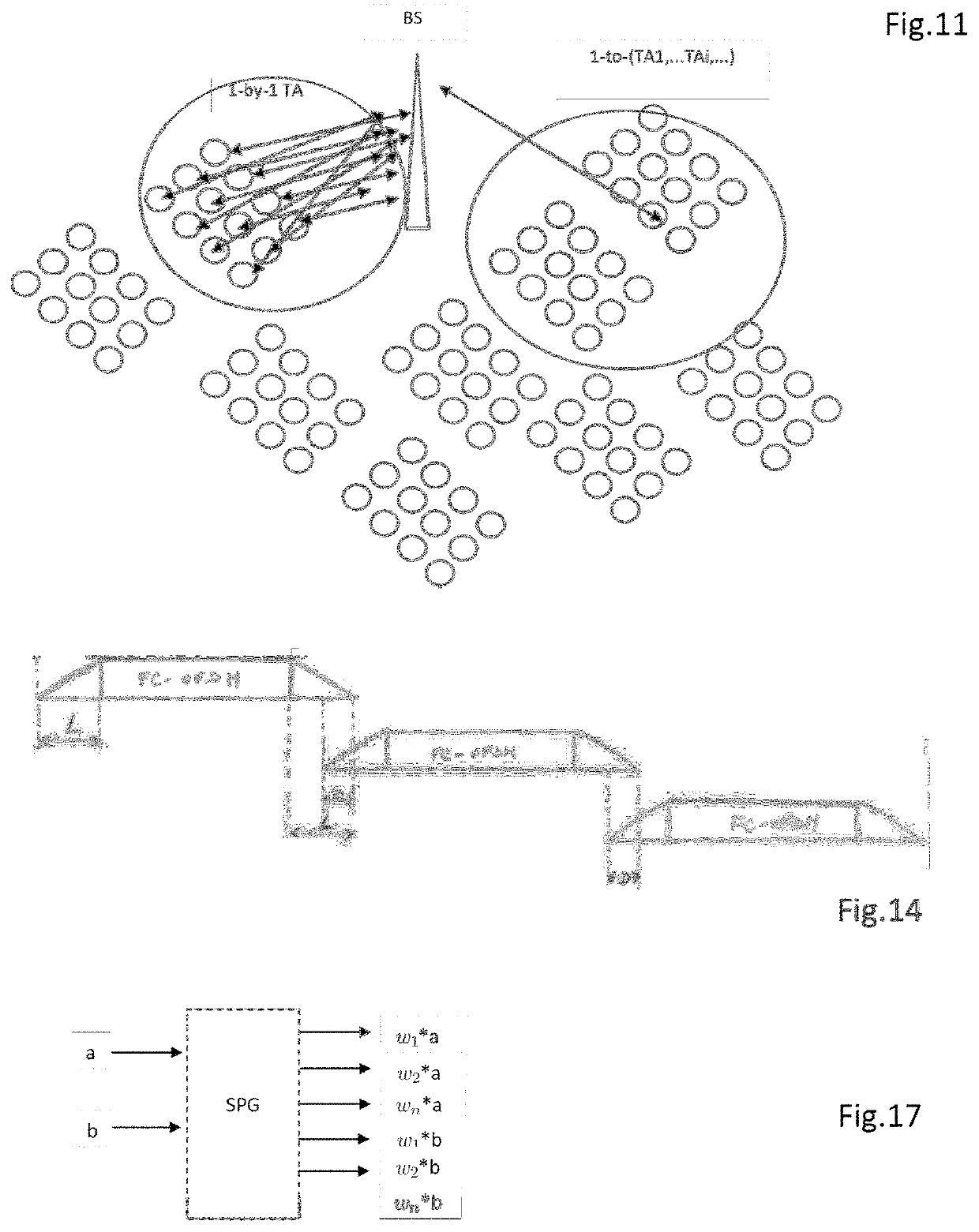Method and device for multi-service transmission with FC-OFDM modulation and corresponding receiver
a multi-service transmission and modulation technology, applied in the field of multi-service transmission with fcofdm modulation and corresponding receivers, can solve the problems of loss of bandwidth, low signal cost, and inability to adapt to certain services at all
- Summary
- Abstract
- Description
- Claims
- Application Information
AI Technical Summary
Benefits of technology
Problems solved by technology
Method used
Image
Examples
Embodiment Construction
[0108]The transmission technique according to the invention is illustrated in FIG. 12. The transmission method 1 according to the invention implemented by a terminal UE generates a new multi-carrier modulation format configurable according to the service with the implementation of the same frequency-time transform of size M and with the same processing after IFFT irrespective of the service which allow the simultaneous processing at the data reception associated with various services. This scheme is called FC-OFDM.
[0109]The new modulation format is obtained with the addition 3 (+FIXs) of a cyclic prefix and / or suffix to the orthogonal multi-carrier symbols generated 2 by the frequency-time transform IFFT combined with a filtering 4 by a filter WDG applied over M+L samples. L and M are non-zero natural numbers. Denoting s1 [ ] the sequence to be mapped at the input of IFFT, s2 [ ] the sequence prior to addition of a cyclic prefix and / or suffix and s3 [ ] the sequence after the filter...
PUM
 Login to View More
Login to View More Abstract
Description
Claims
Application Information
 Login to View More
Login to View More - R&D
- Intellectual Property
- Life Sciences
- Materials
- Tech Scout
- Unparalleled Data Quality
- Higher Quality Content
- 60% Fewer Hallucinations
Browse by: Latest US Patents, China's latest patents, Technical Efficacy Thesaurus, Application Domain, Technology Topic, Popular Technical Reports.
© 2025 PatSnap. All rights reserved.Legal|Privacy policy|Modern Slavery Act Transparency Statement|Sitemap|About US| Contact US: help@patsnap.com



